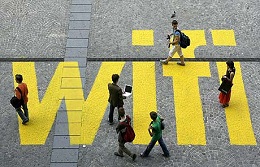Cisco and Ruckus are enjoying the spoils of the growing carrier-grade Wi-Fi market, as an increasing appetite for next-generation hotspot technology puts the demand for equipment on the rise.
New research from ABI revealed the rapid deployment of technology such as Hotspot 2.0 and the acceleration of Wi-Fi standardisation is leading the market towards a US $8 billion (€6.4 billion) windfall by 2019, with Nokia, Ericsson and Alcatel-Lucent also set to receive a sizeable chunk of the sector.
ABI said the proliferation of hotspot technology was on the rise as more operators look to adopt services such as VoWiFi alongside traditional data services.
AT&T, Verizon, T-Mobile, and EE were all given as examples of providers currently offering Wi-Fi calling services or planning to do so in 2015.
Additionally, Virgin Media today announced a partnership with The Cloud that will enable its mobile customers to access free WiFi at more than 22,000 hotspot locations in the UK.
ABI said multi-system operators such as BT, Liberty Global and Comcast were also advertising “millions” of public hotspots to support dual-access features within their home gateway deployments.
“This is a cost-effective way to increase public network coverage and add value for customers while also market a bigger network to attract new businesses and customers,” said Ahmed Ali, Research Analyst at ABI Research.
“While the evolving role of Wi-Fi encourages mobile operators to invest more in their Wi-Fi networks, it also attracts other types of operators like MSOs, Wi-Fi aggregators, and even Muni-Fi network operators to profit from the market through roaming and Wi-Fi-as-a-Service deals.”
ABI claimed Asia-Pacific is currently the leading region in terms hotspot deployments. However, this contradicts a recent joint study from iPass and Maravedis Rethink, which revealed Europe as global leader.
The same study also revealed that 50 percent of all commercial hotspots are currently controlled by non-telco brands, highlighting a “power shift” from traditional telcos to business owners.
In May, Infonetics claimed HotSpot 2.0 was set to become the norm on networks after predicting the number of operator access points to hit 44,000 by 2015.
Have you taken our 2014/15 survey? Click here to take part.
Read more:
New AT&T Wi-Fi hub to offer turnkey roaming solution
Industry body chief hails Europe’s “bullish” Wi-Fi market



